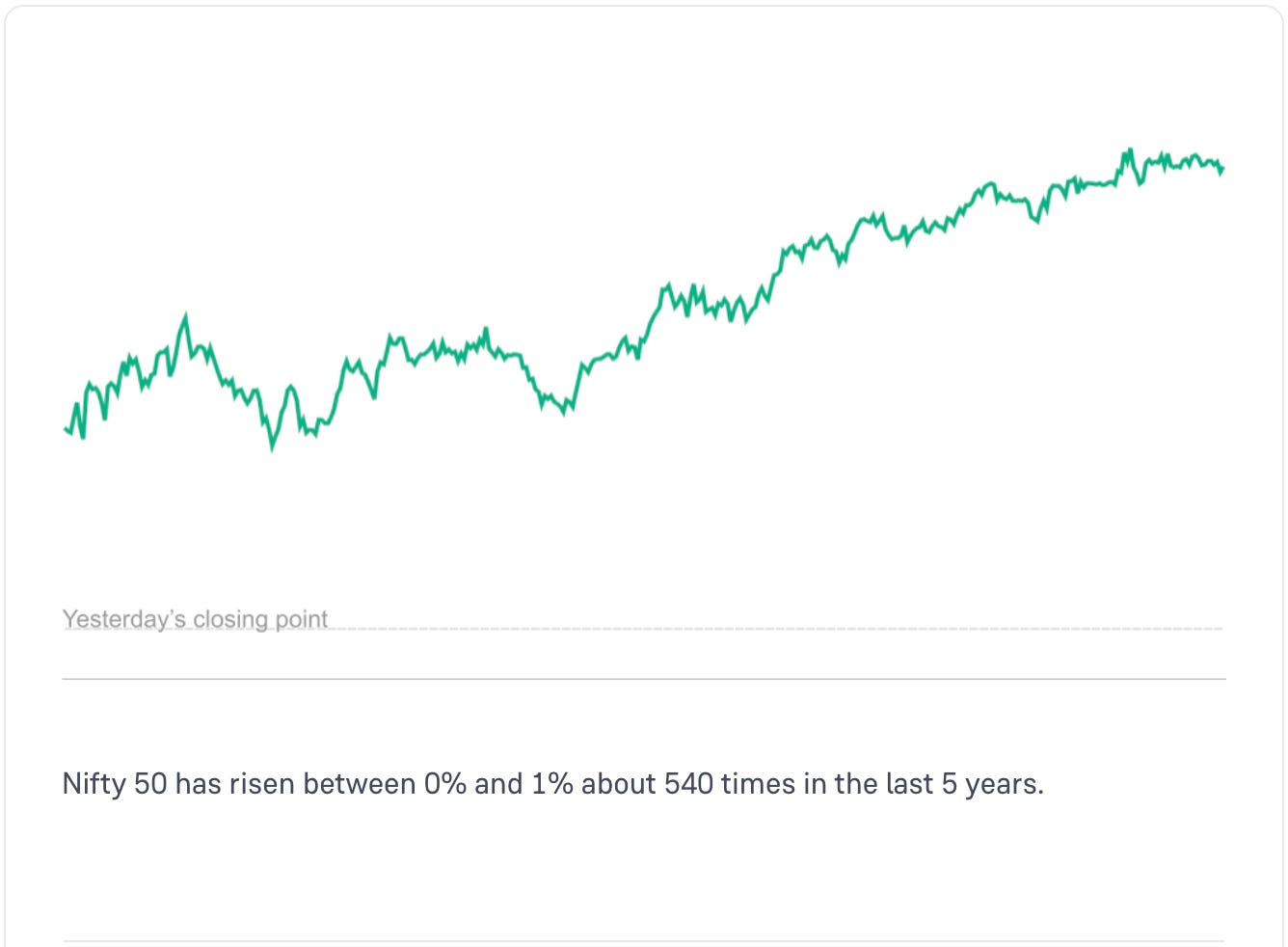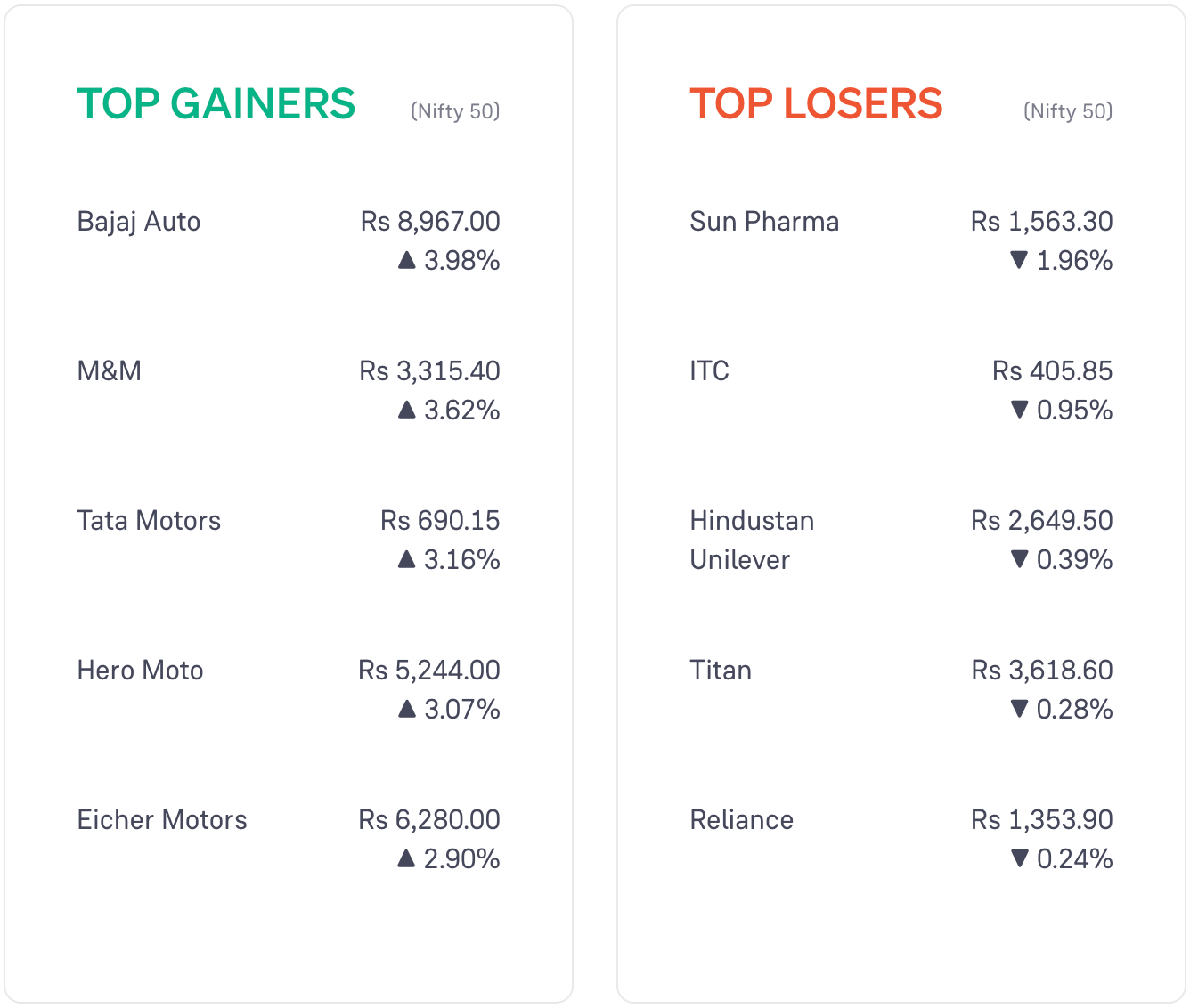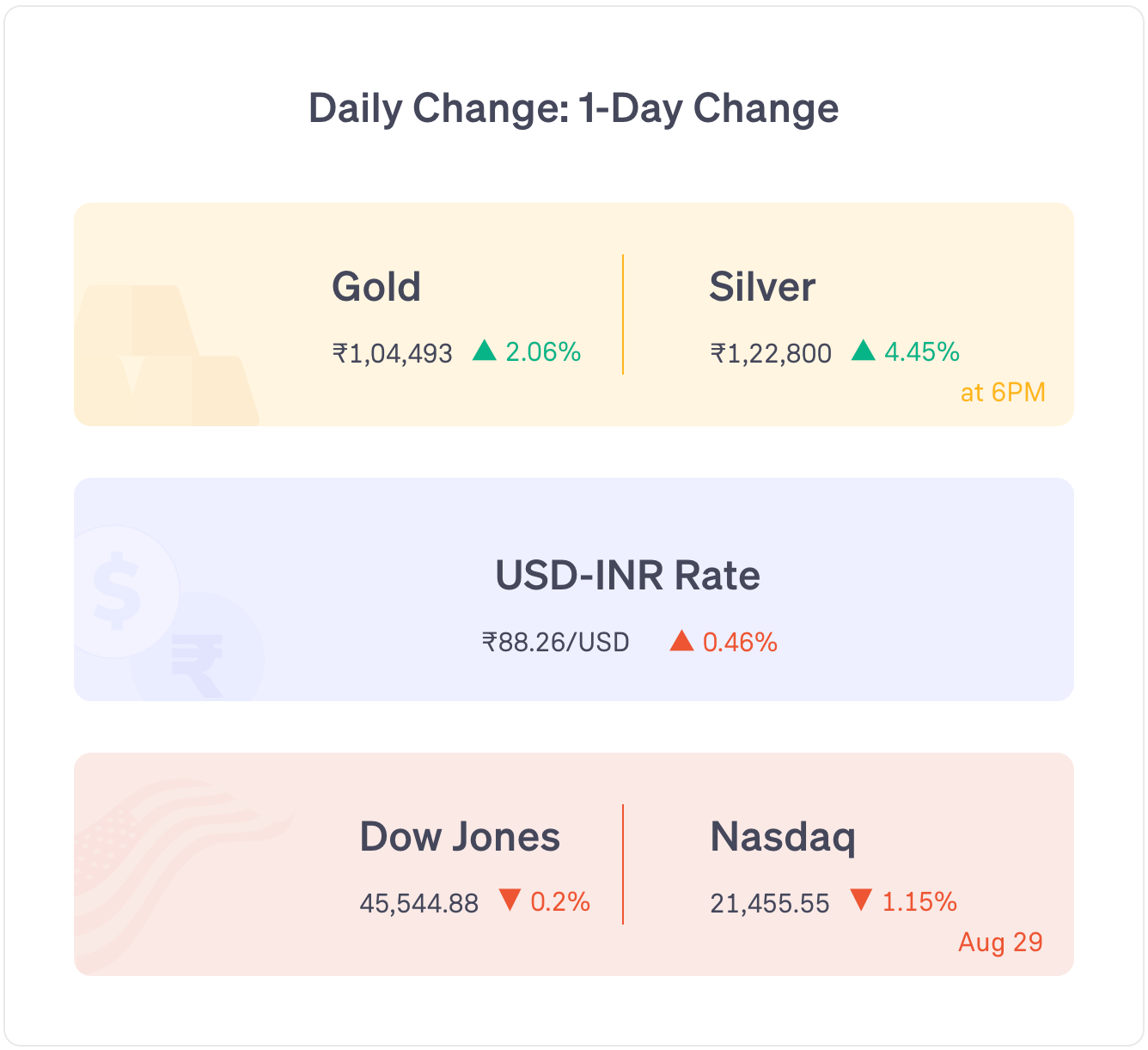Manufacturing PMI at 17-year high, Adani Power to build Rs 10,500 cr thermal plant in MP, & more - Groww Digest
Monday, 1 September 2025
Markets opened above Friday’s closing point.
Nifty 50 rose throughout the day and closed in the green. The positive sentiment may have been due to strong Q1 GDP data, rise in major auto stocks due to good auto sales data, and Prime Minister Modi attending the SCO summit in China.
All sectors’ stocks rose except for the media stocks and pharma stocks. Auto stocks and consumer durables stocks rose the most.
Global markets: US markets fell. Asian markets showed a mixed trend. Most European markets were flat (as of 6 pm IST).
News
India’s manufacturing PMI rose to a 17-year high of 59.3 in August (vs 59.1 in July). This means that manufacturing activity grew more in August than in July.
India’s gross GST collection increased 6.5% year-on-year to Rs 1.86 lakh crore in August (vs Rs 1.96 lakh crore in July).
The number of UPI transactions rose over 2,000 crore in August. The total transaction amount rose 21% year-on-year to Rs 24.85 lakh crore: NPCI.
Leap India applied for a Rs 2,400 crore IPO with SEBI.
Stocks Updates
Adani Green: operationalised solar power capacity of 125 MW at Khavda, Gujarat through a company subsidiary.
Bharat Electronics: received Rs 644 crore worth of orders for data centre, ship fire control system, tank navigation system, etc.
TVS Motor: gave shareholders 4 bonus Non-Convertible Redeemable Preference Shares (NCRPS) for every 1 equity share, maturing in Sept 2026 with coupon rate 6% per annum.
Ashok Leyland: will invest Rs 5,000 crore over 7-10 years in next-gen battery manufacturing in India for both automotive and non-automotive applications. It has partnered with China’s CALB Group for the same.
Adani Power: won a Letter of Award from MP Power Management Company to build an 800 MW ultra-supercritical thermal plant in Anuppur, Madhya Pradesh, at a cost of Rs 10,500 crore.
Word of the Day
Tax Deducted at Source (TDS)
It is a way to collect tax directly from the source of income
When you receive income like salary, bank interest, etc., the payer deducts a fixed percentage before giving it to you. This deducted amount is deposited with the government as your tax.
The rate of TDS depends on the type of payment.
Later, when you file your Income Tax Return (ITR), the TDS is adjusted against your total tax. If extra tax was deducted, you can claim a refund.
6 Day Course
Theme: shareholder meeting
Day 1: Monday
In this week’s course, we will understand what AGMs are and how they can benefit shareholders.
Companies are required to hold Annual General Meetings (AGMs).
This is a meeting of all the shareholders of a company.
When you buy shares of a company, you become a shareholder and have the right to attend these meetings.
Earlier, these meetings were mostly held in person at designated locations.
Now, these are held mostly online or hybrid (online + offline at the same time).
This change allows more investors to attend meetings, and vote on crucial matters.
It is a good opportunity for shareholders to meet the senior management of the company, ask questions, know the company better, and contribute to major decisions.
Featured Question
“Yesterday Grow explained about fresh issue of shares. Please explain how a company creates new shares? It must be by splitting existing shares? If not then the share holding ratio of existing investors will change or they also get new shares to maintain their holding ratio?”
Fresh issue means brand new shares are created by the company.
This does not involve splitting existing shares.
Yes, the holding ratio or percentage ownership of all shareholders is lowered proportionately every time fresh shares are created.
Example:
Company ABC has 90,000 shares total.
Out of this:
-70% are owned by individual investors = 63,000 shares
-10% are owned by employees = 9,000 shares
-20% are owned by founders/promoters = 18,000 shares
Now, this company decides to raise money by selling shares (fresh issue).
They need this money for future growth and expansion.
They decide to create 10,000 new shares. This matter goes into voting. The shareholders and/or the board approve this decision.
10,000 new shares are created and sold to a large investor called XYZ Investments.
So now, there are a total of 1,00,000 shares of this company.
The ownership percentages will change. The new ownership percentages or ratios are as follows:
-63,000 shares are owned by individual investors = 63%
-9,000 shares are owned by employees = 9%
-18,000 shares are owned by founders/promoters = 18%
-10,000 shares are owned by XYZ Investments = 10%
The money raised from this sale of fresh shares goes to the company and must be used for the stated purpose.
It does not go to the founders/promoters or any shareholders.
Did you like this edition?
Leave a feedback here!






